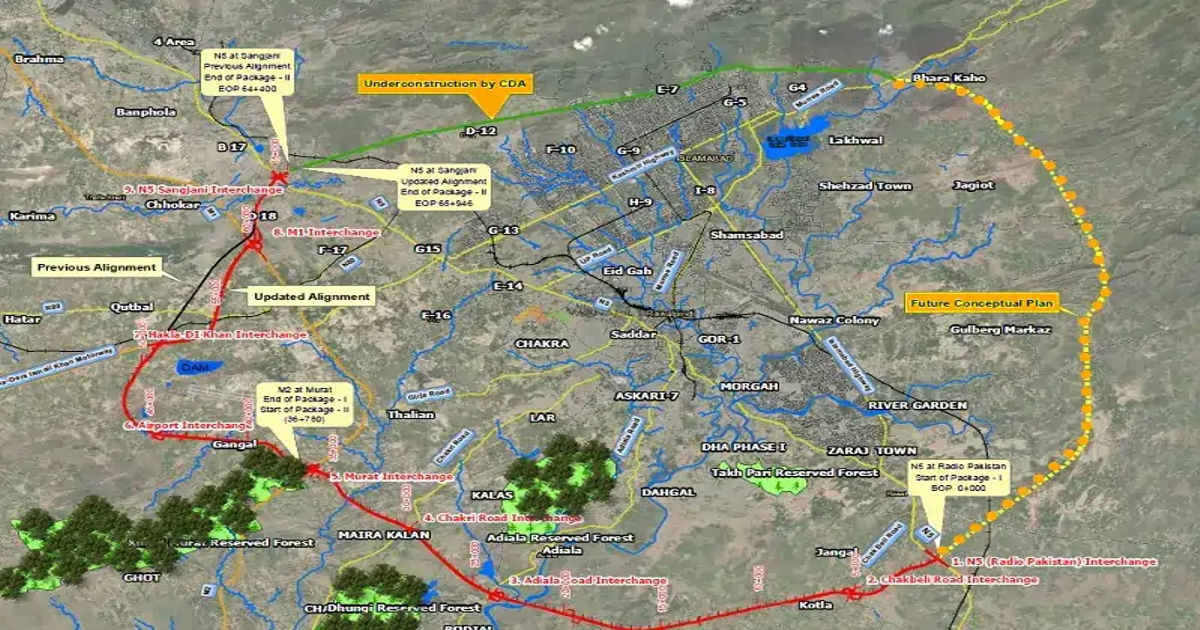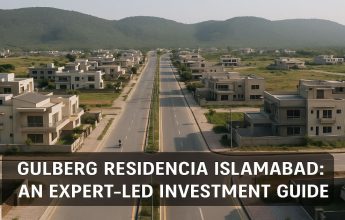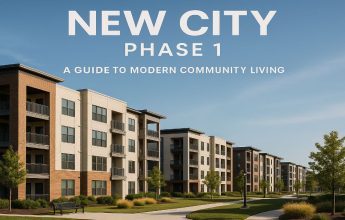Ring Road Islamabad: A Game-Changer for Real Estate Investment

Major infrastructure projects are powerful catalysts for economic growth, and few are as transformative as a well-planned ring road. The Rawalpindi Ring Road Islamabad project will reshape the landscape of the twin cities, creating major opportunities for real estate investors and homebuyers. More than just a new road, it strategically alleviates traffic congestion, enhances connectivity, and unlocks the economic potential of vast new areas. For those looking to make a sound property investment. Understanding the project’s scope and its ripple effects is essential for capitalizing on the long-term growth it promises.
An Overview of the Strategic Project
The Ring Road is a monumental infrastructure project designed to create a 38.3-kilometer-long, six-lane expressway. Its primary goal is to divert heavy traffic from the congested city centers of Rawalpindi and Islamabad. The project’s urban planning envisions a controlled-access corridor that will connect key economic zones and residential sectors, effectively creating a new economic artery for the region. This master plan includes new interchanges, service roads, and designated zones for commercial and industrial activity, which are critical for structured urban expansion.
Route, Connectivity, and Key Interchanges
The planned route of the Ring Road Islamabad is strategic, starting from Rawat and extending to the Sangjani interchange, providing a direct link to the M2 Motorway. This path is crucial as it connects major national trade routes, including the CPEC route, with the Islamabad Capital Territory. By creating seamless connectivity between GT Road (N-5) and the motorway network. The project will drastically reduce commute times for residents and commercial transport. The inclusion of several new interchanges will open up previously less accessible areas, making them viable for new residential and commercial developments.
Market Ripple Effects
The announcement and subsequent development of the Ring Road have already created significant ripples in the real-estate market. We’ve seen a noticeable shift in investor focus toward housing societies and land parcels located along its proposed route. This increased interest is driven by the clear potential for capital appreciation. As infrastructure development progresses, areas that were once considered peripheral are now becoming prime real estate. The project will increase inventory absorption in existing housing schemes and prompt developers to launch new mixed-use projects to meet the growing housing demand.
New Residential Opportunities Along the Corridor
For homebuyers and residential investors, the Ring Road opens up a wealth of new opportunities. The project’s proximity has made many gated communities and housing societies more attractive. These developments promise a better quality of life away from the city’s hustle but with excellent connectivity. Investors are increasingly looking at plots and files in societies that have secured all necessary NOC approvals and are situated near the interchanges. The appeal lies in buying land at a relatively lower price per marla now, with the expectation of substantial value growth as the project matures.
Commercial and Industrial Potential Unleashed
The Ring Road is not just about residential growth. The master plan includes dedicated economic and industrial zones along the route. These zones are designed to attract new businesses, logistics companies, and manufacturing units, creating commercial hubs that will generate employment and economic activity. This planned commercial development provides another layer of investment opportunity. Forward-thinking investors who recognize the connection between infrastructure and commerce can earn high ROI as commercial plots near the interchanges rapidly increase in value.
Price Dynamics and Future ROI
Analyzing the price dynamics is key to any investment. Currently, buyers can purchase properties near the Ring Road Islamabad route at a more accessible price per square foot than properties in established sectors of Islamabad. However, a clear upward trend is visible. On-the-ground experience shows that achieving construction milestones increases investor confidence and directly raises property values. The potential for high capital appreciation is the primary driver for many investors. A property purchased today could yield significant returns in the next five to ten years as the area becomes fully developed and connected.
The Importance of Due Diligence
While the opportunities are immense, it is vital to approach this market with caution and conduct thorough due diligence. The primary risk involves delays in project execution or changes in the final alignment. Furthermore, it is crucial to verify the legal status of any housing society or land parcel. Ensure the project has all the necessary NOC approvals from the relevant development authorities. Partnering with a trustworthy real estate advisor can help you navigate these complexities, verify documentation, and make a secure investment.
Long-Term Outlook
The long-term outlook for real estate around the Ring Road is overwhelmingly positive. This project is a foundational piece of infrastructure that will support the urban expansion of the twin cities for decades. It will not only improve connectivity but also enhance the quality of life by reducing traffic and pollution in the city centers. As new residential and commercial communities flourish along the corridor. The entire real estate ecosystem of Islamabad and Rawalpindi will benefit, leading to sustained growth and a more balanced urban environment.
Conclusion
The Ring Road Islamabad project represents a landmark opportunity for real estate investment. Its strategic route, combined with planned economic zones, promises to unlock unprecedented growth in surrounding areas. For investors and homebuyers, the corridor offers the potential for significant capital appreciation, improved connectivity, and access to modern, well-planned communities. By conducting careful due diligence and focusing on legally sound projects. You can position yourself to benefit from one of the most transformative infrastructure developments in the region’s history. This is more than just buying property; it’s about making a strategic investment in the future of the Islamabad Capital Territory.
Frequently Asked Questions (FAQ)
1. How will the Ring Road directly impact property prices in nearby housing societies?
The Ring Road will significantly boost property prices by improving accessibility and reducing commute times. Societies located near interchanges are expected to experience the highest capital appreciation as their desirability for both residential and commercial purposes increases.
2. Which areas are best for short-term and long-term real estate investment along the Ring Road?
For short-term gains, focus on areas where development is already underway and NOCs are approved. For long-term growth, consider acquiring land in zones marked for future commercial or residential development in the project’s master plan. As these offer greater growth potential over a 5–10-year horizon.
3. What are the main risks associated with investing in real estate near the Ring Road?
The primary risks include project delays, potential changes to the route alignment, and investing in housing schemes with incomplete legal documentation or unapproved NOCs. Thorough due diligence is essential to mitigate these risks.
4. Will the Ring Road benefit commercial properties as much as residential ones?
Yes, absolutely. The project includes plans for special economic zones, warehouses, and commercial hubs. This will drive high demand for commercial plots and properties, potentially offering a higher ROI compared to residential investments in some areas.
5. How can I verify the legal status of a housing society near the Ring Road?
To verify a society’s legal status, you should check for its NOC (No Objection Certificate) and other planning permissions on the official websites of the relevant development authorities. Such as the RDA (Rawalpindi Development Authority) or CDA (Capital Development Authority). It’s also wise to seek professional legal advice.






